#pediatric psychology
Text




Yeah he got ADHD. A Dangerous lack of understanding for Huppermagick elemental Dynamics. To keep it real he kills people with a log.
#wakfu#krosmoz#dofus#joris jurgen#mydoodles#i drew this in class. bon apetit.#pediatrical psychology class to be exact. bon appetit to my future bad understanding of children.
30 notes
·
View notes
Text
What Are The Children Truly Afraid Of?
Pediatric anxiety is the anxiety that children possess. However, it may be hard to distinguish when a child is exhibiting anxiety like symptoms. Some important things to look at is their behavior and the antecedents occurring right before the behavior starts. In the behavior is when the anxiety symptoms are most likely to occur. However, it does help to know some common antecedents that trigger the child’s anxiety as well as what their behavior looks like as a result from feeling anxious. Listed below are top 3 common anxiety triggers and top 3 common anxious behaviors. Lastly, after covering the triggers and behaviors of pediatric anxiety a specific program, ASU Compass for Courage, that helps aid these symptoms will be discussed at the end. Knowing is only half the battle and having resources to treat pediatric anxiety hopes to combat the other half.
Top 3 Common Anxiety Triggers in Children
Specific Phobias
Specific phobias is a mental disorder where a certain objects and situations cause anxiety upon seeing, or even hearing about the certain object or situation. According to the DSM-5 there are common objects or situations that looked out for when assessing for specific phobia (Sucheta et al., n.d.). Those objects and situations include flying, heights, animals, getting a shot, or seeing blood. However, for children there are other specific phobias that occur because of a traumatic event they experienced or witnessing a traumatic event happen in front of them. (Sucheta et al., n.d.). In some cases it won’t even make sense why they are anxious about the object or situation because the perceived to danger level of the object or situation to the child is either low or non-existent (Sucheta et al., n.d.). For instance, a child may have a fear of spiders and even though there aren’t any spiders present a Halloween decoration of a spider will cause them immense anxiety.
Some of the children may have a fear that may seem irrational to most. For instance, one 13 year-old girl had a phobia of money and her fear of money started at age 4 and is considered a very rare phobia (Banurea and Effendy, 2023). Now to most money is associated with good and get you the things you want. However, for this little girl her parents would tell her that money was the root of all evil and can lead to sin which started when she was 3 years old. (Banurea and Effendy, 2023). This was an attempt to allow the little to not request money often from her parents (Banurea and Effendy, 2023).
As far as anxiety triggers go, specific phobias can be easily identified in a child. However, an important note to take from when talking to children about certain objects or situations, especially at a young age. Is to make sure you explain to them in the best way you can why certain things are scary and should be avoided. Your explanation could potentially be the trigger for the child to get specific phobia about the object they should avoid.
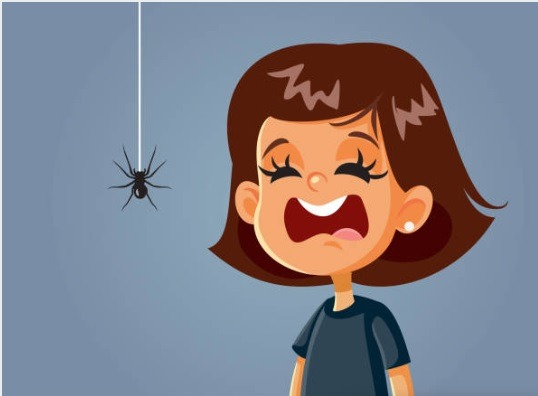
2. Parents Fighting
When your parents are fighting it was never a fun experience. Sometimes it went unnoticed when we were outside playing. However, in some childhood experiences it would seem the parents would have no trouble yelling and being mean to each other while their children were present. The reason why some children may have anxiety around hearing their parents fighting is because in the past it may have resulted in one of the parents leaving home for days on end and the child never knowing when that parent would return. Or the parent would stay and when interacting with the child right after fighting with the other parent, take their anger out on the child by being mean to the child who did not do anything to the parent.

3. Getting Bullied
It’s no surprise that many children are getting bullied, especially in school. The issue is that many parents will not know that their kids are getting bullied. Even some teachers and school staff may not even see the bullying occur because of having to pay attention to too many children at once. However, even though the bulling may not be seen or noticeable it can still be a trigger just one that is harder to point out. In fact, according to one study where 550 children assessed the effects of bullying on their self-esteem, it resulted in the children who were experiencing bullying getting anxiety from the experience (Balluerka et al, 2023).
With a trigger like bullying, it’s more apparent when you look at the behavior of the child. Especially when it comes to them going to school or when interacting with certain kids that would point out that the bullying is triggering the child’s anxiety.
Top 3 Common Anxious Behaviors in Children
Somatic Complaints
When children get sick, they will tend to let people know by stating some of their somatic complaints. These complaints will consist of things like the child saying their head hurts, stomach hurts, or if you notice the child is wetting the bed a lot more or having less control of their bladder even though they know how to use the bathroom (Sucheta et al., n.d.). Sure, it may be a disease in their body so going to the doctor makes sense. But there maybe some psychological testing that needs to be done because the child may have anxiety and seeking treatment may remove these somatic complaints.
Children with ADHD tend to have a lot of anxiety and with the increase of their ADHD symptoms their anxiety and somatic complaints also increased (Bozatli et al., 2023). So, if a child is showing the behavior of somatic complaints, then a trip to the child psychologists might be needed.

2. Avoidance
With a child having anxiety one of the behaviors, they will exhibit is avoidance. Avoidant behaviors range from a child throwing a tantrum, or completely removing themselves from situations (Sucheta et al., n.d.). For instance, if a child needs to go to school and they are feeling anxious about going to school, some of the behavior that they will show is crying, yelling, and physically refusing to leave the house when it’s time to leave for school. Another example of avoidance is a child completely disengaging and removing themselves from what is causing them anxiety. For instance, if the child has to shower and you keep reminding them to take one, but they keep ignoring the request to shower and finding other things to do instead.
It is shown that individuals with Generalized Anxiety Disorder all reported higher level of avoidance than those without it (Newman et al., 2023). So if your child is showing a high degree of avoidance it's best to check and see if they have Generalized Anxiety Disorder.

3. Perfectionism
The last behavior a child will exhibit is perfectionism. When a child is showing traits of perfectionistic behavior, they will most likely display expectations that are considered unreasonable regarding their own performance and when those expectations are not met they will be very critical of themselves (Sucheta et al., n.d.). For instance, let’s say the child has the expectation to get 100%s on all of his tests and assignments and he receives a 98% on one of his tests. He will most likely be very hard on himself and say things like: “I must not be that smart if didn’t get a 100% on this test.”. Paying attention when a child vocalizes their expectation and how they treat themselves when those expectations are not met can help deduce that the child is experiencing anxiety.
If your child is displaying perfectionistic behavior it can lead to psychopathology in their adolescent years and young adult years and it is best to intervene early as soon as the behavior recognized (Lunn et. al, 2023).
ASU COMPASS for Courage
Now that we are aware what may trigger anxiety in children and what behaviors occur as a result of having anxiety some resources to help combat a child’s anxiety would useful. Luckily a resource like ASU COMPASS for Courage is a resource that will effectively help a child navigate the world with little to no anxiety. The ASU COMPASS for Courage was created by Dr. Armando Pina and Ryan Stoll, and it is essentially game like learning program that includes modules to help children struggling with anxiety. The program includes a total of 6 learning modules that have been proven to help children with regulating their emotions, get higher test scores and grades, improve social skills, gain confidence, and decrease in-class meltdowns. The game is meant to captivate the children with its colorful games as well keeping them engaged with the way the games are designed. It also allows them to build good relationships with other children. It is definitely worth investing in if you feel your child has anxiety.
Getting Bullied
Specific Phobia
Somatic Complaints
Avoidance
Perfectionism
ASU COMPASS for Courage
Overall, it's important to know if a child has anxiety mainly because if they are experiencing high degrees of anxiety they are most likely unhappy in their current state. I feel the one that gets overlooked the most is the somatic complaints. Mainly because issues like stomach hurting and headaches are associated with physical illnesses and most would probably stop if they find noting is physically wrong with the child. So it's good to do some psychological tests to make sure that anxiety is not the cause for the somatic complaints
Anyway that concludes the Top 3 Triggers and Behaviors for Anxiety. Did you learn something new? What behavior or trigger do think is the most common? And which behavior or trigger did you find the most interesting? Please comment and share the post so others can learn this information as well. Thank you.
2 notes
·
View notes
Text
By the time the Harvard Warren Anatomical Museum reopens I will have moved back out of Massachusetts this is insane. I have been trying to get in since fall of 2018.
#at this point I’m considering making up something and saying my thesis is related to pediatric psychology and sexology#which like it’s. not /not/. but I just want to see your medical photography please please please#yes specifically the very sad children
2 notes
·
View notes
Text
The IFS people want to do it with children…
#mine#ifs#okay look#I don’t care abt the methodology of therapy and kids#I don’t know about pediatric psychology#I do have an issue with ENCOURAGING DEPERSONALIZATION#and the way THEY talk abt this#that’s what they’re doing
4 notes
·
View notes
Text
#best psychiatrist in bangalore#top 10 psychiatrist in bangalore#psychiatrist near me#best psychiatric hospital in bangalore#best psychiatric doctor in bangalore#psychiatric rehabilitation centre#best psychiatrist in karnataka#psychologist near me#children's problem behaviors#child psychiatrist in bangalore#adolescent psychiatrist bangalore#Child & Adolescent Psychiatrist#PSYCHIATRIC TREATMENTS FOR CHILDREN AND ADOLESCENTS#Top Child and Adolescent Psychiatrist in Bangalore#Adolescent mental health treatments#Best Child Psychology Doctors In Bangalore#Child mental health#Adolescent counseling#Pediatric psychiatry#Pediatric mental health specialists#Autism Treatment for Adults & Children#Cognitive Behavioral Therapy Bangalore#autism signs & treatment
0 notes
Text
Mr. Motaz not wanting to share nor record the burned bodies
I respect his choice but also f u c k
#mun post#*sighs deeply in psychology degree haver* i may have to get my phd now whether i like it or not#someone has to be mentally prepared to be there for the large kiddo population and I am but g o d I know the rest of my colleagues aren't#i understand why the universe kept pushing me towards pediatric and developmental psychology now but i need the funding to leave the usa
1 note
·
View note
Text
What Is the Role of a Therapist in Mental Health Rehabilitation?

It is no secret that strong mental health can significantly contribute to an individual’s overall well-being. However, as we have repeatedly seen, mental health can be impacted by various factors. This realization highlights the Importance of Rehabilitation
When considering Rehabilitation, our attention is automatically drawn to identifying the best Psychologists/Therapists we can seek.
This Article Explains the Significant Role Therapists Play in Mental Rehabilitation.
Role of a Therapist
Experienced doctors working with a well-known Rehabilitation Centre in Bangalore explain that in the realm of mental health rehabilitation, therapists continue to play a crucial role as guides and supporters. By implementing a combination of empathy, evidence-based techniques, and a compassionate approach, therapists ensure the safe recovery of their clients.
How Does This Happen?
Creating a conducive environment
Therapists need to provide a safe and supportive environment where individuals can express themselves freely. This helps them understand their clients better.
Conduct specific Analysis
Every patient's history is different. As such, getting closer to a patient and studying his behavior, responses and thought patterns helps the therapist to arrive at a tailor-made treatment program for each individual.
Implement evidence-based approach
There are many latest technologies driven treatment programs that therapists have used very successfully to get into the depth of an individual’s concern and address it smoothly. Rest assured, a patient's physical and mental comfort is not compromised at any stage of study.
Encourage self-reflection
An expert therapist will give every opportunity to his client to self-reflect on his mental health condition and come out with probabilities of what could be the cause of his discomfort.
Advocating for good health and well-being
Through frequent education programs, therapists share the secrets of maintaining good mental health and more importantly, sustaining it for longer periods.
Mental Health Rehabilitation is not as easy as it is perceived to be. When matters get tricky and complicated, the best option is to visit an experienced therapist and seek his opinion. If you are Looking at the Best Choice, do not look beyond MaargaMindcare, recognized by many for its success in Rehab for Anxiety and Depression.
#best rehabilitation centre in bangalore#rehabilitation centres for alcohol in bangalore#rehabilitation centre for depression in bangalore#Best Psychiatric Rehabilitation Centre In India#Expert Psychiatrist for depression treatment#Expert Psychiatrists for Anxiety#online therapy for anxiety and depression#Mental Health Treatment#mental health conditions#mental therapist near me#mental therapist in Bangalore#mental health hospital near me#pediatric psychiatrist in bangalore#psychiatric care centre#best child psychiatrist yelahanka#child psychiatrists near me#psychology clinics in bangalore#depression doctor in bangalore#bangalore mental hospital
0 notes
Text
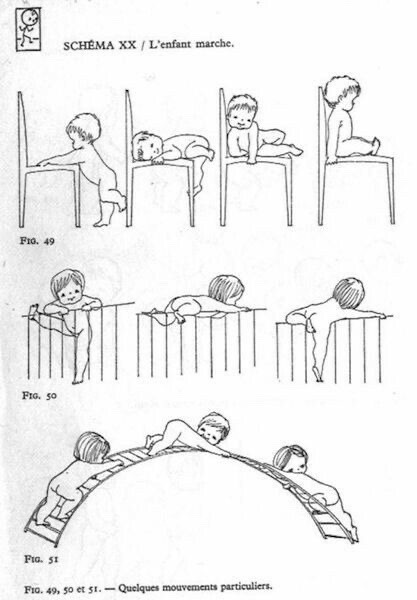
Source Unknown
0 notes
Text
Katherine Tang (she/her) - UCSD '22

Career Goal: Physician (Pediatrics)
Major(s)/Minor: Majors in Biochemistry/Chemistry Majors / Psychology Minor
Introduction: Hello everyone!! My name is Katherine but I usually go by Kat! I graduated from UCSD this past June with a B.S. in Biochemistry/Chemistry and a minor in Psychology. While I’m originally from LA, I’m staying in San Diego for work so I tend to bounce back and forth between the two counties to visit my family (love that 2-3 hour drive :’)). I’m taking two gap years before medical school to take a much needed break and also gain more clinical experience! In my free time I love to do a variety of arts and crafts (embroidery, crocheting, bullet journaling, etc) as well as bake, read, watch shows/movies, and collect succulents. I’m very passionate about mental health so if you ever find yourself struggling with burnout or just need somebody to talk to feel free to reach out to me! I’m always happy to chat about anything :)
Involvements:
{Undergrad}
The Preuss School UCSD tutor, Paper Airplanes English tutor, MEMO Outreach Intern/Chair, Lab Assistant, Mental Health Well-Being Peer Educator, Chemistry Instructional Assistant, RISE Ambassador, Teaching + Learning Commons Content Tutor for chemistry, biology, and stats, Palomar Pathmaker Intern
{Post-grad}
Palomar Pathmaker Intern, MEMO Projects Development Director, Medical Assistant for a Vein and Vascular Clinic
Extracurriculars:
Baking, embroidering (I tend to have grandma hobbies), binging shows/movies, going on boba runs, collecting succulents! I want to get better at crocheting and read more books during this gap year :)
What kind of advice would you be giving? Undergrad advice, applying for scholarships, MCAT studying, job interviewing, taking gap years (I’m a big proponent of gap years!!), general life advice :)
Best piece of advice you've received? Fill your cup first! (basically it means that you should fulfill your own needs aka “fill your own cup” before pouring into other peoples’ cups since you can’t pour with an empty cup)
Preferred method(s) of communication: Phone Number (text/call), Facebook Messenger
#ucsd#biochemistry#chemistry#physician#pediatrics#research#medical assistant#Pathmaker Internship#psychology
0 notes
Text
The Problem with Daycares: Inconsistency in Authority and Attachment
For the last five years, all of my work hours (and most of my volunteer hours) have been spent in childcare or pediatrics. I took care of kids ranging from six weeks to twelve years old, and I did it in several settings — summer camps, daycares, clinics, and private homes. The time that I spent in childcare capitalized on my interest in child development, so along the way, I read a lot about developmental psychology and related subjects. I’m not a parent myself, but I’ve spent enough time in childcare to have one major gripe with the daycare setting in particular.
It’s been the extremely rare time that I’ve brought up problems with the daycare setting without anyone become defensive in response. It seems many parents with young children in daycare find it a personal offense for a daycare worker to imply that their decision is more likely harming their children than not. On the one hand, I can understand the reaction — some families need both parents to work, or some single parents can’t take care of their young children and work at the same time. On the other hand, it’s reasonable to evaluate a situation and say it can be — or even is — quite detrimental without passing judgment on people who have no other choice. I don’t think it’s a good thing that parents put their kids in daycare, but then again, it also wouldn’t be good if the whole family starved because not enough money was made. In some cases, putting a child in daycare is the best of several bad options. But that doesn’t make putting them in daycare a good option, and I would do everyone an injustice to pretend that it was.
I’d rather discuss what I see daycare doing to kids on the assumption that parents could keep their children at home if they decided to. Not everyone can, and I know that — but adding caveats for that every other paragraph will interrupt the topic more than necessary. If I am to write about the detriments of the daycare system, I’d rather talk about it like it could be minimized, not like every child in daycare belongs to a struggling family with no other option. So, in this article, I may talk like every parent could pull their kid out of daycare and keep them at home if they wanted. I know that doesn’t apply to everyone, but as you’ll see, I certainly wish it did.
Not every daycare has a setting comparable to my experiences, so if your child is in daycare and you don’t see any of these problems applying to it, that’s fantastic — send me the name of the daycare in the Contact form or in the comments below, because I’d genuinely be curious to see.
There are a lot of small problems I have with daycares — for example, everything, always, without exception, must be completely and perfectly safe. Or the menu options are often designed to be aesthetically nutritious to parents, rather than nutritious options kids actually eat. Or the age-segregated system mirrors that of the typical school system, so kids spend almost the entirety of their social hours in the first 21 years of their life with same-age peers — and get little practice accommodating children of other ages. Or the early teacher-child dynamic dichotomizes adults into either playmates or bosses, but not mentors or guiders. Or this, or that, or a lot of things. But my biggest problem with daycares is that they are inconsistent.
How is it inconsistent?
To flesh this out, imagine that you’re a one-year-old child going to daycare for the first time. Up to this point in your life, you’ve probably had two caregivers — your parents — with perhaps a few grandparents, family friends, or relatives dropping in now and then. Most of the time, though, you were with your parents, and you knew who they were and you knew you could trust them.
When you go into a daycare setting, that is the first thing to change. On your first day, you get put in a room with seven other toddlers — at best. At worst, you get put in a room with thirty-one other toddlers, with the room divided into four small sections to make four “rooms”. Your parents tell you they’ll be back for you that evening, but you have no idea what that means. Now you’re in a room with a bunch of other crying babies, your parents are gone, and there are two complete strangers in here to take care of you.
So that’s facet number one of the inconsistency: Who’s taking care of you now — the people at school or your parents? For a one-year-old child, they hardly understand who they’re supposed to attach themselves to now. They may try to reattach to a daycare worker, but that would look bad on the worker, so they can’t let that happen — and the child is left confused about who to trust, attached to the worker anyway, or endlessly sobbing for the people they are attached to (their parents) to come back. I haven’t seen a fourth category in any daycare child younger than three.
Now that you’re in this classroom, you discover something new: most daycares (not all) move kids from classroom to classroom during the day to keep legally required teacher-child ratios. A child might spend 8a-12p in class 1, 12p-3p in class 2, 3p-4:30p in class 3, and then 4:30p-5:15p in class 1 again. By the time the parent comes to pick up their kid, the child has changed classrooms (and teachers) four times. For a one-year-old, that’s four full setting changes and four rotations of people they’re supposed to trust to feed, clean, teach, and play with them. A one-year-old doesn’t understand the daycare policy, though, so they learn very quickly that whatever adult they happen to be with is in charge — and they rarely learn to discriminate between strangers they shouldn’t trust and adults that they can.
There’s facet number two: which of these strangers is in charge when? You move from classroom to classroom, trying to keep up, but who you’re with can change during the day, and some of the teachers are nicer to you than others. How are you supposed to know the difference between adults in charge of you and adults who happen to be nearby?
Then you come to your classroom one day — the one you spend the morning in, at least — and the person you normally see isn’t there. Your parents ask the new person what happened to your old teacher. “Oh, she quit,” they reply, and your parents nod uneasily. Then, off you go to the new class. You’ll see your parents tonight, maybe to eat dinner together before you go to bed.
There’s facet number three: daycare teacher turnover is extremely quick. One classroom might change teachers four times or more in one school year — and that’s not counting the times the child changes classrooms for keeping ratio. Depending on classroom change rate, a child could have eight or more different teachers throughout the year — for a one-year-old, that’s distressing and confusing. You don’t have time to healthily trust one person before you get scooted along to the next, so you learn to either trust no one, trust no one but your parents, or trust everyone. None of those set children up for much success regarding emotional boundaries in the future.
Going deeper into the setting is just more disturbing. Most daycare settings, for example, have very, very, very strict policies about the kinds of discipline that can and can’t be enforced (mostly to prevent over-discipline and lawsuits). In the daycare that I worked at, I was not allowed to tell a child “no”, take away any privilege (outside time / toy from home / etc), have them sit in time-out, or ask them to apologize to someone else they hurt. The only — only — thing I was allowed to do was redirect the child to something more exciting. That is a tremendous problem. If, as an adult, I hit someone over the head with a wooden building block, no sane person would smile at me and say, “now, Emma, this is a great block for building a tower with! Let’s go build a tower together!” Why not? Because that’s reinforcing my harmful behavior. It’s teaching me that as long as I’m bad enough, I’ll get to do fun things. No one is teaching me that there are negative consequences I have to pay for if I do something bad. In fact, it is teaching me the exact opposite: only the people that I do bad things to have to pay for the bad things I do. I don’t have to pay for those consequences, because now I’m going to go build a tower. You can deal with the headache I just gave you by yourself. To state the obvious, this is a disturbing prototype of disordered antisocial personality behavior.
Even if I was allowed to tell a child no, take away their toy from home, or make them sit in the corner for five minutes, that would not be the same as a parent disciplining a child. This is for a few reasons. One, there’s no guarantee a daycare worker isn’t disciplining your child out of anger rather than sincere care. If a child is disruptive and hurts other children deliberately, it can be more than challenging to respond gently, and if time-out was an option, the daycare teacher could use it as punishment, not discipline. Discipline helps you learn; punishment just makes you pay for the damage you did to someone else. Two, there is still the inconsistency in authority described above. What if the daycare teacher has different moral standards than the parent? What if the daycare teacher refuses to discipline something the parent would? And what does it teach the child about who to listen to if a temporary, high-turnover daycare teacher can administer discipline the same way a parent can?
Hence facet number four: inconsistent discipline. It takes one child who hasn’t been taught and disciplined at home to teach every other child in the classroom to act out — and if these kids have been raised primarily in the daycare setting since three months old, very little discipline at home has been happening. Most parents aren’t around during the day to even notice the behaviors, so how could they discipline them? Consequently, by age four, most kids have spent the last three and a half years in settings where they could do whatever they wanted (and if the teacher didn’t like what they did, they got to do something more fun). The parents may find a child’s unrestrained behavior unacceptable and discipline them at home, but the child will spend most of their waking hours at the daycare — and that’s no match for the one or two hours a parent gets in the morning or evening each day. Further, the child isn’t taught self-restraint or consideration for others — only simple hedonism.
Not every teacher or daycare setting fails to teach a child any self-regulation whatsoever. Some teachers in some settings still do a good job despite the limits of the daycare discipline system. However, there are still two problems with this. First, this is no match for the regular, consistent discipline of a parent. If a parent is the primary administrator of discipline, they have consistent standard they communicate to the child, and they typically discipline the child in a consistent manner. The child then conceptualizes a more precise understanding of what is “right” and “wrong” according to their parent, rather than having to change that standard for every teacher.
Secondly, “discipline” within the limitations of the daycare system does not delve into the root of the problem, but merely addresses the child’s external behaviors. As a consequence, the child isn’t taught a reason for the discipline in terms of robust morality. More often, the reason for any discipline a teacher could manage within the system is reasoned by “you can’t do that” or “we don’t do that in class”, which hardly gives the child a moral framework with which to understand reality. Discipline like this can help manage a classroom and even a child’s external behaviors, but it doesn’t guide their growth the same way a parent could, because a parent has the authority to explain the moral framework to their child (and daycare teachers are reticent to do so for fear of lawsuits). Consequently, even the discipline manageable in a daycare setting is more adjacent to cutting off the heads of weeds than actually tearing out their roots.
So we’ve established a few ways that daycares are inconsistent — primarily in terms of attachment, authority, and discipline. But what does this mean for the kids?
Is inconsistent a bad thing?
Whether inconsistency is a bad thing is actually a fair question. On the one hand, much of real life is inconsistent — management, primary school teachers, social circles, and so on change constantly. From a distant vantage point, it seems like introducing a child to change in caregivers and standards early would prepare them for the constantly changing world they’re destined to grow up in.
However, I don’t think it’s self-evident that a high level of variability in early childhood equals success in the highly variable adult world. The reason for this is rooted in attachment theory, which is a psychological concept discussing how infants respond to stress and reassurance in their environment. I’ve cited the 6-page entry on the topic from the Encyclopedia of Behavioral Medicine below should you like to view it, but to summarize, the theory puts forward that when babies experience need or difficulty — hunger, thirst, soiled clothing, physical pain, cold, need for attention, or so on — their natural response is to communicate this need by crying. As the baby cries, though, he or she takes note of whether someone comes to respond to their needs when they call for help. If someone comes, attends to their cries, takes note of their needs, addresses them, and soothes the baby again, the baby will learn that expressing their needs will have an effect on their environment. Moreover, the baby will learn that there are at least some individuals in the world who are not hostile and who will, in fact, care for them.
Attachment theory reference work entry
However, if no one comes, or if people come irregularly, or if different people come each time, the baby is going to develop a confused understanding of how the world views them and their needs. Maybe the world doesn’t care, maybe other people aren’t dependable, maybe the external environment is hostile to their needs. Whatever the framework that they subconsciously develop, the baby learns that the world is against them, and so are its inhabitants. When humans are young, they seek a specific figure to create an attachment bond with. When this is consistently changed or ripped away, as in the case of daycare settings, the inconsistency is scarring to the process of proper attachment.
This does not only apply to infants and one-year-olds. This also applies to two, three, and four year olds. At that age, the attachment imbalance comes as a result of how long the child spends away from the person they’re supposed to have a primary attachment to. They spend so many hours away from their primary caregivers that they swing between attachment to them and attachment to their daycare teachers. A child aged two to four in a classroom with twenty other kids is rarely going to have their needs met promptly — it’s hard for a daycare teacher to keep up. Consequently, the child is still learning that the world is inattentive to their needs — a sorry substitute for healthy attachment.
Because of the impact that the attachment variability and authority imbalances have on children and their perception of the world, I think it’s fair to say that inconsistency is a bad thing for young children, especially on matters of attachment and morality. Here are two other research articles that discuss longitudinal and biological consequences of growing up in daycare, if you would like to read them:
Longitudinal data (crime, negative emotion, hyperactivity, aggression, etc.).
Biological and socioeconomic data (cortisol, crime, child and parent stress, etc.).
Are there better alternatives that avoid such inconsistency?
There are some benefits to the things daycare tries to accomplish — downtime for parents, socializing time for kids, and practice for other individuals in taking care of children. I don’t propose that children only ever stay at home with their parents and never spend time with another adult. However (again, assuming this is feasible), I think that attachment theory as well as general research supports that children should remain primarily with their parents throughout the day, and other caregivers used as an occasional supplement.
One of the upsides to the idea behind daycare is that children get time to interact with other children. On the one hand, this is certainly a good idea — children learning to play with each other form a more adept understanding of social rules and how to interact with others. On the other hand, this kind of beneficial socialization is not limited to the daycare setting — and the daycare setting often struggles to properly accomplish this anyway. Structured playdates (for very young children) and classroom-style activities (for older children) are a reasonable way to help a child socialize. Personally, I am somewhat of a proponent of more unstructured playdate time for older children because of my Montessori bent (for a later post), but settings analogous to daycares — as long as they actually accomplish what they say they do — can be a firmly positive supplement to a child’s development.
Consequently, I think that while the daycare setting reaches for some positive aspects, not only does it often fail to reach them, it also often causes serious byproducts that harm more children than they help. Because of the vulnerability characterizing early childhood, the inconsistency in caregivers, authority, and standards is a major pitfall that comes as a consequence of attempting to compartmentalize full-on parenting into an industrialized system. If you have any thoughts on the subject, research I overlooked, or otherwise, I’d be curious to hear.
#childcare#social issues#child development#daycare#preschool#education#pediatrics#elementary education#psychology#attachment theory#attachment issues#attachment
0 notes
Text
"Unlocking Your Potential: The Power of PSYCH-K® Therapy for Transformation and Growth"
Blog by Katie Kovaleski
0 notes
Text

What is Co-Regulation? Teachers, caregivers, therapists and medical professionals use this technique with infants, toddlers, children and young adults! It is a way for children to develop the ability to manage their emotions and self-regulate after distress. You can start co-regulation with infants at the beginning of life through connection with nurturing and reliable primary caregivers. Co-regulation involves various types of responses, such as a warm, calming presence and tone of voice, verbal acknowledgement of distress, modeling behaviors that can help regulate their energy levels, and providing a structured environment that supports emotional and physical safety. The caregivers and professionals that utilize Co-Regulation methods pay close attention to the shifting emotional and physiological cues of children, while also regulating their own emotional state. When the adult is able to provide supportive, consistent responses in the midst of tantrums, behaviors or high energy levels, children develop a growing capacity for self-regulation. Check out our apparel collections for fun designs about sensory and emotional regulation and our website has more education/resources for these hot topics!
#coregulation#emotional regulation#regulation#occupational therapy ot therapist#pediatric occupational therapy#occupational therapist#occupational therapy#therapy#social work#rehabilitation#school psychology#psychology#pediatric nursing#pediatrics#special education#education#teacher#teaching
0 notes
Text
Anti-ism is psuedoscience and a moral panic rolled into one
One of the most dangerous things about therapyspeak leaving the intended audience is that now antis feel fully qualified to tell survivors how they should and should not be coping, even to the point of attempting to override/contradict the advice of certified therapists.
I've had antis tell me the fiction I enjoy writing is retraumatizing myself, that I am doing harm by writing it; when I responded that actually, my therapist signed off on the stories I wrote (even when I mentioned the specific phrase "consensual nonconsent"), they said that my therapist doesn't know what she's talking about since she sanctioned my coping mechanism and explicitly labels her practice as kink-positive. Antis are attempting to make me, a survivor with mental illness that could ultimately be fatal if I leave a psychologist's care, disregard the advice of the medical professional supervising me when they have no certification at all. This could, if I were a more vulnerable person, be dangerous for not only my trust in my therapist, but it could sabotage my treatment as well.
They are using what amounts to little more than memes, based on misinformation, that use a few intelligent-sounding phrases that very rarely apply the way they think they do, as a wedge to attempt to assert themselves as authorities who can, with certainty, dictate the appropriate course of treatment for a total stranger, including telling them to disregard the therapies administered by a trained professional.
In other words? Antis are frighteningly similar to anti-vaxxers, who took medical terminology they didn't understand, applied it to shaky cause-effect logic models, started a moral panic, used statements generated by that moral panic as a citogenesis-fueled proof their initial starting of the moral panic was justified, damaged the doctor-patient relationship of millions of total strangers, jeopardized the healthcare of those strangers who now believed their doctor to be incompetent for following accepted medical best practice, and fomented dangerous fringe political ideologies that coupled themselves to other conspiracies based on rejecting commonly-acknowledged practices.
"Vaccines cause autism! Narrative therapy that implements any form of controversial kink causes retraumatization of the writer, reader, or both, and starts the writer on an inescapable slippery slope to becoming an abuser themself! It's better to be dead than autistic! It's better to suffer feelings of shame and/or isolation in silence than it is to use fiction to put a voice to your feelings! Your child is vaccine-damaged from thimerosal and is getting sick from virus-shedding! Your fiction caused me to groom myself and you're a porn-addicted monster for not facing your trauma the proper way! Your doctor doesn't know what's good for you, I do! Only I understand how your body/mind work and what treatment is appropriate for you! Your doctor has been manipulated by Big Pharma/kink supporters! The empirical-study-informed best practices for pediatrics/psychology are what's wrong, not me, whose research is carefully informed by TikTok videos and Twitter posts carefully formulated to cause amygdalar growth to keep me afraid so I will continue to engage with fear-mongering content that causes my politics to shift towards the alt-right, who coincidentally also push narratives based in fear, not in medicine! I am being perfectly logical here!"
Antis fundamentally reject empirical medicine just the way anti-vaxxers do. They just seem to get a free pass on it since it's "only" mental healthcare they are sabotaging, and few people acknowledge it as something as legitimate and lifesaving as other medical care.
723 notes
·
View notes
Text


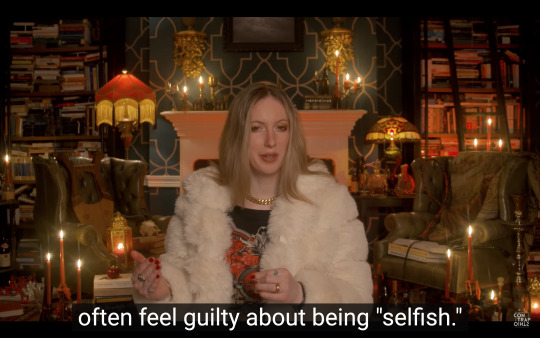
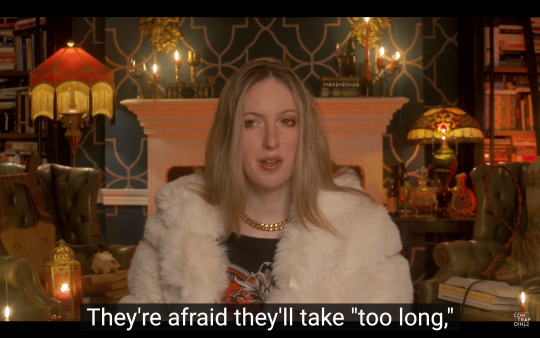

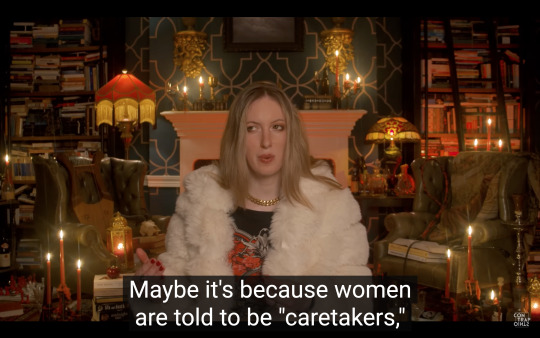
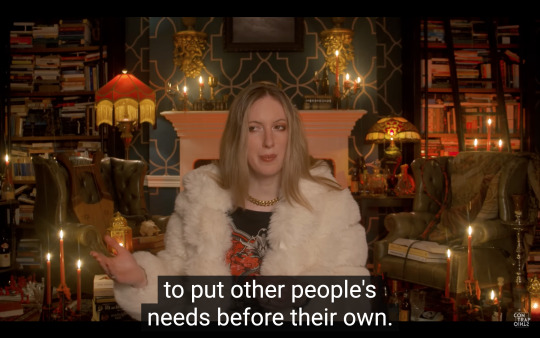












"I wish that people who are inclined to crusade against "dangerous books" or "abusive ships" would try to think about fantasy in a way that's less literal and more psychological.
Like do furries and omegaverse fic writers "normalize bestiality"?
No, the fantasy of human animality is not about literal animals, it's about unleashing what is symbolically "animalistic" in us, the drives and urges that human taboos and decency forbid.
Are people who are into "Daddy doms" or diapers or whatever "literally normalizing pediatrics?"
Well no, it's not usually about that at all. Ageplay is usually about fantasy regression to the social position of someone who has no responsibilities and needs to be taken care of.
The fantasy, or the roleplay scenario, gives you permission to be taken care of.
Edward Cullen's notorious "I like to watch you sleep" feels creepy to a lot of people. And fair enough. "Creepy-ness" is subjective.
But I feel like you can find Edward creepy and still understand that for Stephenie Meyer, "Twilight" is not the expression of a literal desire to be stalked by creatures of the night.
The fantasy is of a protector watching over you. A witness. A guardian angel.
Like when you're a kid and you want your mom to stay in your room with you until you fall asleep. (…)
When I watch "Fifty Shades", I don't feel like I'm watching a seasoned predator. I feel like I'm watching a woman's fantasy. Because I am.
And if people like Gail Dines are too obtuse to notice the difference, that's kind of their problem.
I've been holding this in for 10 years, and I'm gonna say it.
I am begging these people to learn to think psychologically instead of literally, so that they're not constantly baffled and traumatized upon encountering literally the most common type of sexual fantasy that people have."
Source: Twilight | ContraPoints
551 notes
·
View notes
Text
Eric Harris was not a psychopath.
I know, this is a controversial title. Allow me to explain. TL;DR SUMMARY AT END! And, before continuing, do not mistake my presentation for sympathy.
What inspired my professional research in the first place was the trope that Eric was a psychopath. This trope was, I believe, popularized by Dave Cullen's awful account of the events at Columbine. First of all, Dave Cullen is not a psychologist or mental health professional. Next, Dave Cullen's work has been referenced by professionals as if he were a psychologist.
You're probably wondering why some person posting on Tumblr feels more qualified to speak on this. My credentials: I am qualified to conduct research on humans, I have a BA in Psychology, and a Masters in Forensic Psychology. My chosen career path focuses on intervening on at-risk youth before they become school shooters. I chose to present my research in an accessible location and not hide it behind research journal pay walls.
The biggest takeaway I want you to get from this is that severe mental health diagnoses take away from the smaller warning signs we need to be paying attention to.

So, what was Eric's "problem?" His behavior is rooted in poor childhood socialization. We know this already. Eric moved around a lot as a child. Throughout his crucial developmental years, the family moved three times: Kindergarten through second grade at 2 schools in Ohio, then to Oscoda, Michigan. In Sixth grade, and a portion of seventh, he was in Plattsburgh, New York. The remainder of his middle school and high school years were completed in Littleton, Colorado.
Eric's high mobility is an explanation for his poor social skills. A study conducted by Robert T. Webb, PhD, Carsten B. Pederson, DrMedSc, and Pearl L.H. Mok, PhD (2017) supports this theory. They conducted research on over 1 million children in Europe and analyzed the psychosocial affects of "moving around a lot" in childhood. This sort of scenario is commonly seen in children of military families; Eric's dad was active-duty Air Force and is the reason they moved so much.
This research found the children who moved around more were at higher risk for: attempted suicide, successful suicide, and deviant behaviors. Violent offending spiked in those who had more mobility in mid to early adolescence. The study reported even higher risk for those who saw multiple moves in the same year, which is something Eric also experienced.

Barker and Berry (2009) found that children of active-duty military caregivers often experienced behavioral issues while their parent was deployed and excessively attached behavior when the parent returned. In a separate study conducted by Flake, Davis, Johnson, and Middleton (2009), children of deployed caregivers exceeded Pediatric Symptom Checklist (PSC) cut-off scores for high risk psychosocial morbidity. Meaning, these children had the highest possible likelihood for behavioral issues rooted in interpersonal starvation. This is a dangerous hot and cold game to play with adolescents that are still learning and understanding the meaning of attachment.
Forming connections and then quickly abandoning them could understandably create an inability to form deep, personal attachments with others. When he did form these connections, perhaps he clutched them a little too closely. These relationships may have been highly volatile if Eric feared he may leave them and lose their connection, just as he had experienced so many times before. The slightest movement may have triggered an aggressive response out of fear.

Eric’s inability to keep and maintain a friend group wasn’t his fault – he did not learn how to properly socialize as a child. Sure, he was friendly and polite, but those are surface-level traits. After breaking the ice, friends of Eric began finding that he was pushy, controlling, and even a bit callous.
While Eric was noted as kind and polite, he was often regarded as shy as well. This shyness may have been influenced by trouble with low self-esteem. In a journal entry dated 11/12/1998, Harris wrote, “Everyone is always making fun of me because of how I look, how fucking weak I am and shit…” (Note: Eric's surgery for pectus excavatum as well as being bow-legged)
We’ve gently and briefly begun the exploration of Eric's childhood and understand the ways in which it could have affected him, behaviorally. The sad truth is, however, there just isn’t more data to help us understand the intricacies of his upbringing. I believe it is incorrect to say he wasn’t met with love by his family.
I do believe, however, this was the case of a child who was gentle, sensitive, and whose personality required fragility and a compassionate parenting style. He was treated a bit more ruthlessly than he was able to withstand by being subjected to an authoritarian parenting style, which we will certainly unpack further in the coming research. I cannot imagine this was on purpose, but I do feel he was forced into being a tough, surface-level person that he was not capable of being. Truly, Eric was probably a very weak person.
IN THE END, ERIC REQUIRED CONTROL IN HIS RELATIONSHIPS. Because of his constant social upheaval, Eric fucking hated not having control. This is a common pattern in attachment styles; avoidant, anxious, ambivalent, etc. We crave control because, for so long, our lives were unpredictable.
Okay, what about his inflated ego? Eric's sense of self was greatly inflated in private, but in public, he was quiet, shy, and relatively unlikeable. He equated himself to a god -- a god of what? He was a master of nothing in real life. Eric's insecurity led him down a path in which he privately lived out his fantasy of being better than those around him.
The most important thing that gets overlooked and nullifies the idea he was a psychopath was the fact that he did feel. Evidenced in his journal:
He expresses that he doesn't want blame to fall on his friends or family. He also writes that he has no self-esteem, he wishes he was accepted more, mourns his relationship with his Dad ("I had a lot of fun at that gun show, I would have loved it if you were there Dad. We would have done some major bonding. Would have been great. Oh well."), he's upset about not having friends ("I hate you people for leaving me out of so many fun things. And no don’t fucking say “well that’s your fault” because it isn’t, you people had my phone #, and I asked and all, but no. no no no don’t let the weird looking Eric KID come along, ooh fucking nooo."), and is self-conscious of how he behaves ("why the fuck can’t
I get any? I mean, I’m nice and considerate and all that shit, but nooooo. I think I try too hard.")
Lastly, the infamous scene from the Basement Tapes in which Eric is crying and says a tearful goodbye to his friends that he wishes he could have said goodbye to. Read more here, page 8.
Eric's journals are filled with anger, hate, and deplorable language. But in my opinion, he does not bear the mark of a psychopath.
TL;DR
Moving around a lot interrupted Eric's ability to socialize in childhood
As a child, Eric was likely sensitive and required a gentle parenting style and was instead met with an authoritarian style that focuses on obedience rather than nurturing
Eric's own words demonstrated his ability to feel emotion, remorse, and self-consciousness.
Eric's "inflated ego" was a show he put on in private because he wasn't accepted by his peers; it was a defense mechanism to protect himself
Overlooking small behavioral patterns in favor of severe conclusions forces us to miss the warning signs after it's too late. It’s hard to hear, but sometimes it doesn’t take that much for people to do horrible things to one another.
240 notes
·
View notes
Text
The sacred oath to “do no harm” underscores the responsibility of health-care professionals to protect the well-being of all patients. In light of the policies proposed by Alberta Premier Danielle Smith targeting trans (two-spirit, transgender, non-binary, gender non-conforming) youth, we, as medical students, feel an overwhelming duty to challenge the misguided ideology underlying these policies.
Gender-affirming care encompasses a continuum of social, psychological and medical interventions that support trans people in expressing their gender identity, and is endorsed by the Canadian Pediatric Society and Canadian Psychological Association. This continuum of care is often misconstrued as a rigid “pathway” that all trans people progress, beginning with a social transition (e.g., using gender identity-congruent pronouns, etc.) and progressing to medical and surgical interventions, as suggested by Smith. In reality, trans people choose to transition in a variety of ways that meet their needs, and every individual’s path is unique. [...]
Continue Reading.
Tagging: @politicsofcanada, @abpoli
89 notes
·
View notes